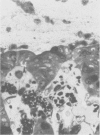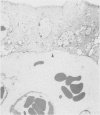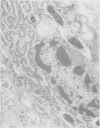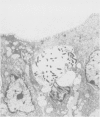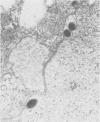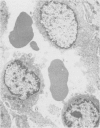Abstract
Twelve pigs were inoculated orally with pure cultures of Treponema hyodysenteriae. Pigs were necropsied at different time intervals postinoculation; colonic specimens were collected and prepared for light and electron microscopy. The earliest colonic lesion detected by electron microscopy consisted of superficial vascular congestion and dilatation, edema of the lamina propria and intercellular separation of the epithelial cells at the crypt shoulders. This lesion progressed to epithelial cell necrosis and extrusion into the lumen and extravasation of red cells. Large numbers of spirochetes were present and free, between, over and under necrotic epithelial cells whether in place or partially extruded. Spirochetal penetration of colonic enterocytes and intracytoplasmic multiplication were confirmed in this study. The spirochetes were found to invade the epithelial cells only from their lateral borders. The relationship between T. hyodysenteriae and the colonic anaerobes was not determined.
Full text
PDF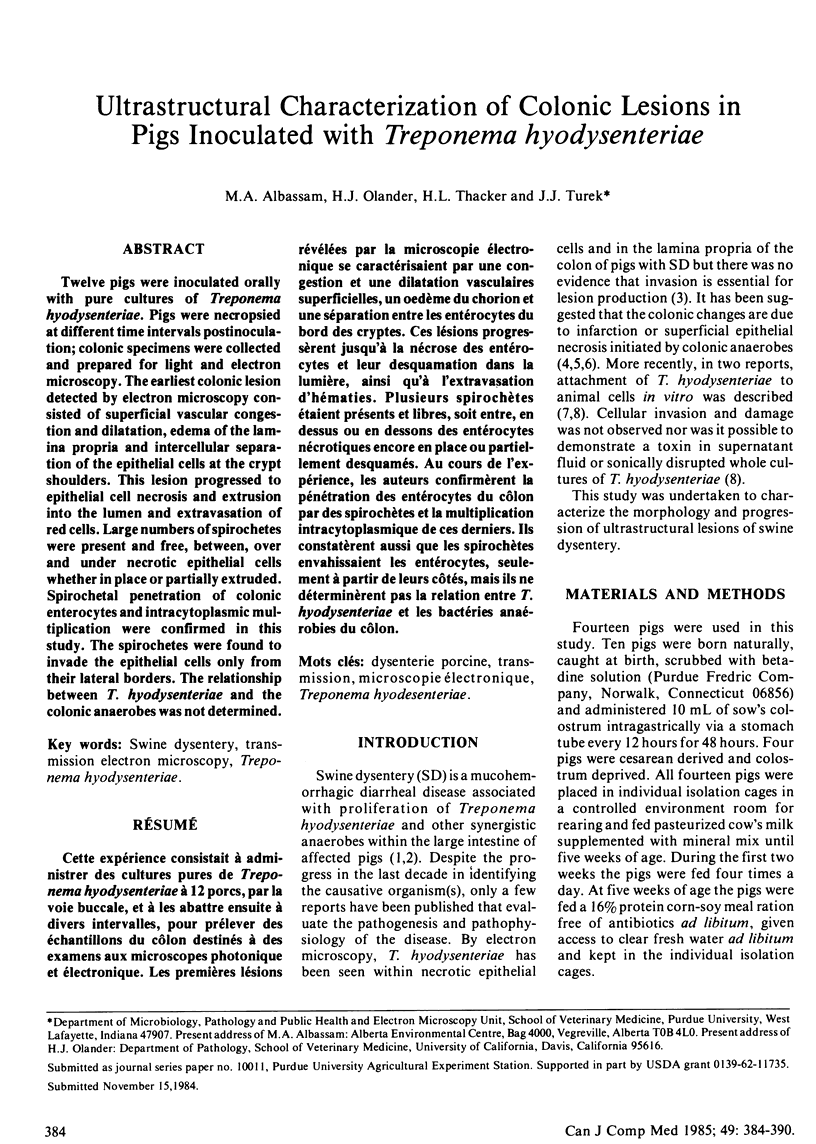
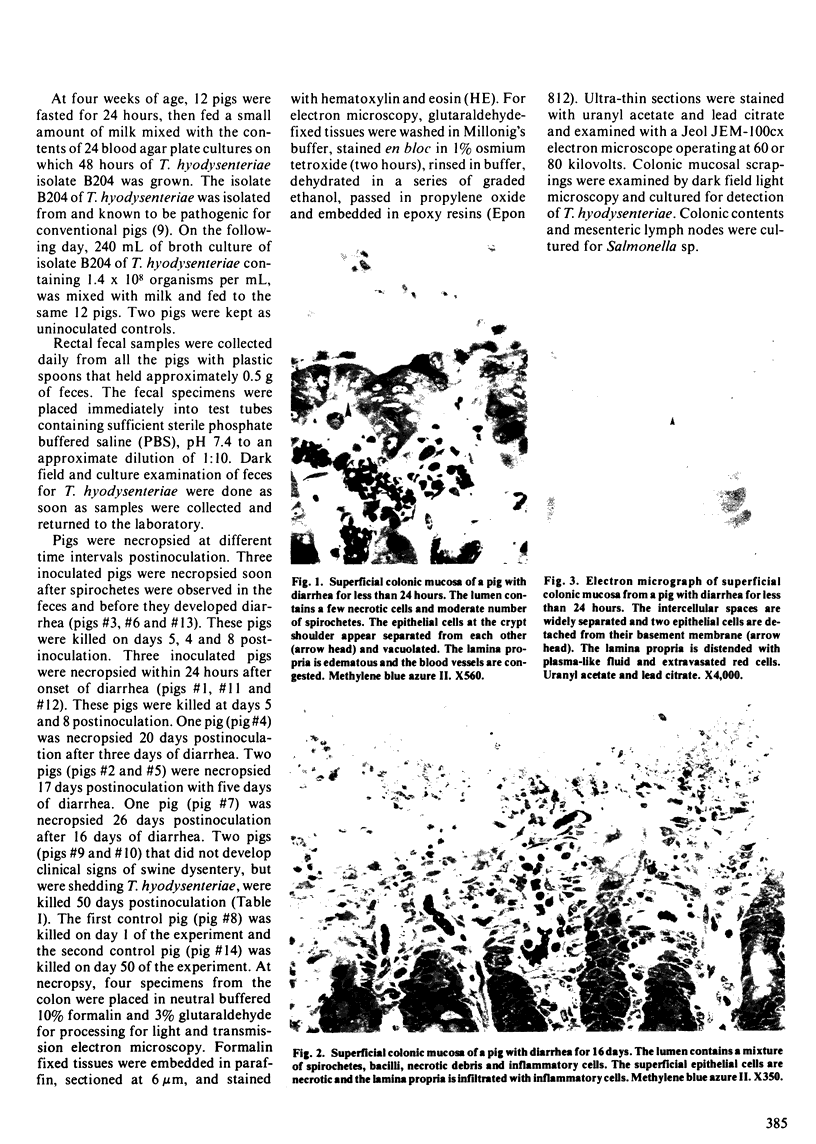
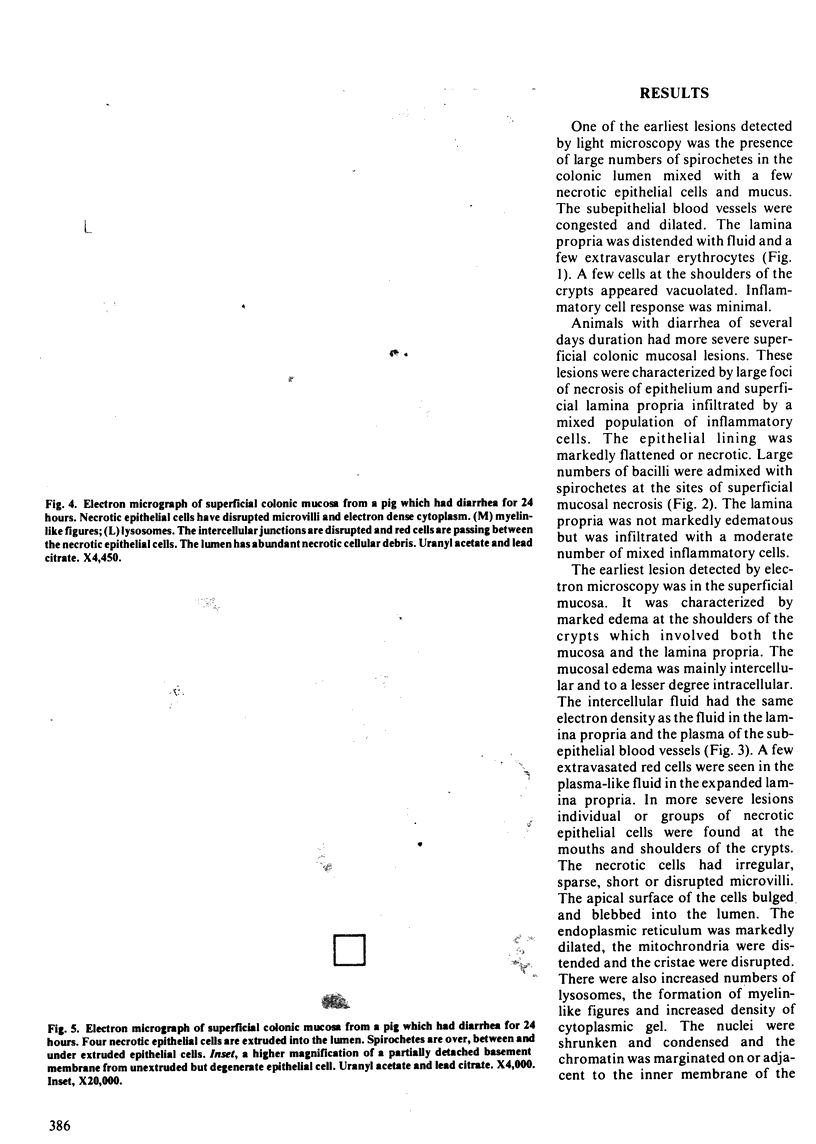
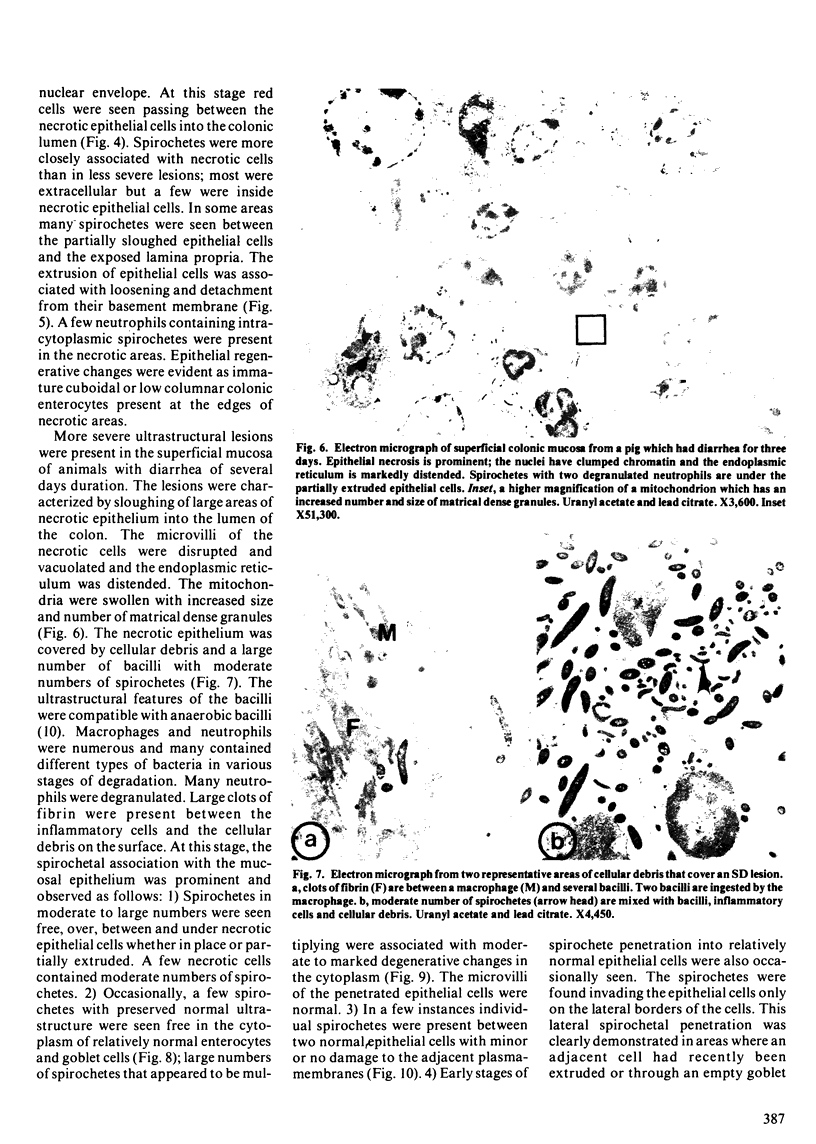

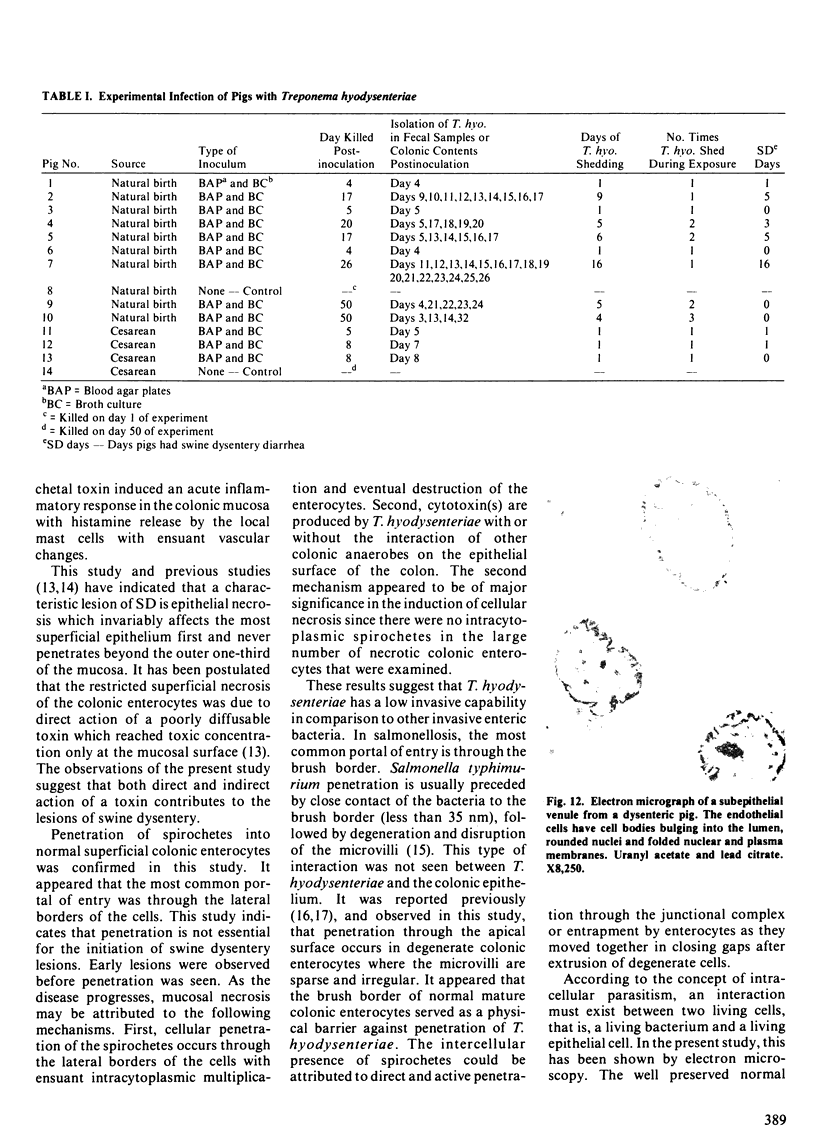
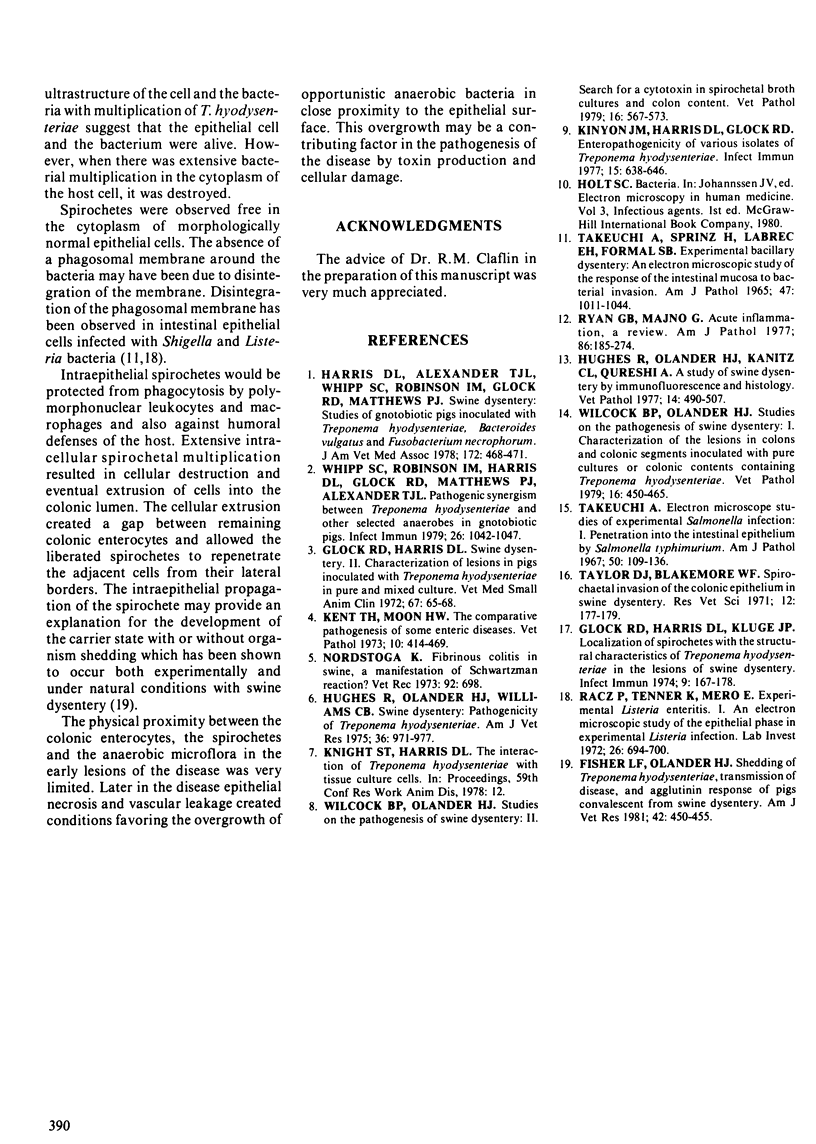
Images in this article
Selected References
These references are in PubMed. This may not be the complete list of references from this article.
- Fisher L. F., Olander H. J. Shedding of Treponema hyodysenteriae, transmission of disease, and agglutinin response to pigs convalescent from swine dysentery. Am J Vet Res. 1981 Mar;42(3):450–455. [PubMed] [Google Scholar]
- Glock R. D., Harris D. L., Kluge J. P. Localization of spirochetes with the structural characteristics of Treponema hyodysenteriae in the lesions of swine dysentery. Infect Immun. 1974 Jan;9(1):167–178. doi: 10.1128/iai.9.1.167-178.1974. [DOI] [PMC free article] [PubMed] [Google Scholar]
- Glock R. D., Harris D. L. Swine dysentery. II. Characterization of lesions in pigs inoculated with Treponema hyodysenteriae in pure and mixed culture. Vet Med Small Anim Clin. 1972 Jan;67(1):65–68. [PubMed] [Google Scholar]
- Harris D. L., Alexander T. J., Whipp S. C., Robinson I. M., Glock R. D., Matthews P. J. Swine dysentery: studies of gnotobiotic pigs inoculated with Treponema hyodysenteriae, Bacteroides vulgatus, and Fusobacterium necrophorum. J Am Vet Med Assoc. 1978 Feb 15;172(4):468–471. [PubMed] [Google Scholar]
- Hughes R., Olander H. J., Kanitz D. L., Qureshi S. A study of swine dysentery by immunofluorescence and histology. Vet Pathol. 1977 Sep;14(5):490–507. doi: 10.1177/030098587701400509. [DOI] [PubMed] [Google Scholar]
- Hughes R., Olander H. J., Williams C. B. Swine dysentery: pathogenicity of Treponema hyodysenteriae. Am J Vet Res. 1975 Jul;36(7):971–977. [PubMed] [Google Scholar]
- Kinyon J. M., Harris D. L., Glock R. D. Enteropathogenicity of various isolates of Treponema hyodysenteriae. Infect Immun. 1977 Feb;15(2):638–646. doi: 10.1128/iai.15.2.638-646.1977. [DOI] [PMC free article] [PubMed] [Google Scholar]
- Nordstoga K. Fibrinous colitis in swine, a manifestation of Schwartzman reaction? Vet Rec. 1973 Jun 30;92(26):698–698. doi: 10.1136/vr.92.26.698. [DOI] [PubMed] [Google Scholar]
- Rácz P., Tenner K., Mérö E. Experimental Listeria enteritis. I. An electron microscopic study of the epithelial phase in experimental listeria infection. Lab Invest. 1972 Jun;26(6):694–700. [PubMed] [Google Scholar]
- Takeuchi A. Electron microscope studies of experimental Salmonella infection. I. Penetration into the intestinal epithelium by Salmonella typhimurium. Am J Pathol. 1967 Jan;50(1):109–136. [PMC free article] [PubMed] [Google Scholar]
- Takeuchi A., Sprinz H., LaBrec E. H., Formal S. B. Experimental bacillary dysentery. An electron microscopic study of the response of the intestinal mucosa to bacterial invasion. Am J Pathol. 1965 Dec;47(6):1011–1044. [PMC free article] [PubMed] [Google Scholar]
- Taylor D. J., Blakemore W. F. Spirochaetal invasion of the colonic epithelium in swine dysentery. Res Vet Sci. 1971 Mar;12(2):177–179. [PubMed] [Google Scholar]
- Whipp S. C., Robinson I. M., Harris D. L., Glock R. D., Matthews P. J., Alexander T. J. Pathogenic synergism between Treponema hyodysenteriae and other selected anaerobes in gnotobiotic pigs. Infect Immun. 1979 Dec;26(3):1042–1047. doi: 10.1128/iai.26.3.1042-1047.1979. [DOI] [PMC free article] [PubMed] [Google Scholar]
- Wilcock B. P., Olander H. J. Studies on the pathogenesis of swine dysentery. I. Characterization of the lesions in colons and colonic segments inoculated with pure cultures or colonic content containing Treponema hyodysenteriae. Vet Pathol. 1979 Jul;16(4):450–465. doi: 10.1177/030098587901600409. [DOI] [PubMed] [Google Scholar]
- Wilcock B. P., Olander H. J. Studies on the pathogenesis of swine dysentery. II. Search for a cytotoxin in spirochetal broth cultures and colon content. Vet Pathol. 1979 Sep;16(5):567–573. doi: 10.1177/030098587901600509. [DOI] [PubMed] [Google Scholar]



